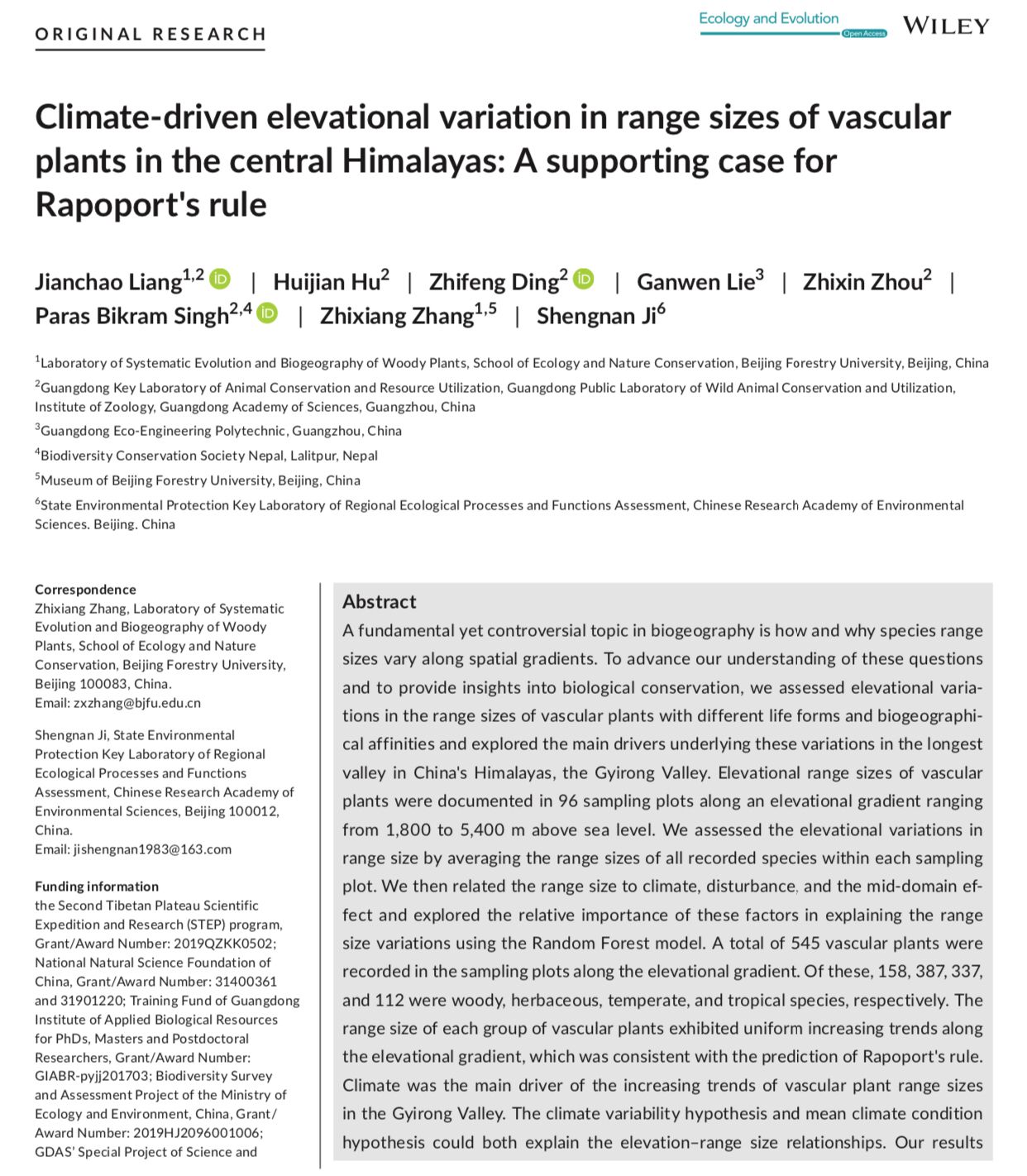
A fundamental yet controversial topic in biogeography is how and why species range
sizes vary along spatial gradients. To advance our understanding of these questions
and to provide insights into biological conservation, we assessed elevational variations
in the range sizes of vascular plants with different life forms and biogeographical
affinities and explored the main drivers underlying these variations in the longest
valley in China’s Himalayas, the Gyirong Valley. Elevational range sizes of vascular
plants were documented in 96 sampling plots along an elevational gradient ranging
from 1,800 to 5,400 m above sea level. We assessed the elevational variations in
range size by averaging the range sizes of all recorded species within each sampling
plot. We then related the range size to climate, disturbance, and the mid-domain
effect
and explored the relative importance of these factors in explaining the range
size variations using the Random Forest model. A total of 545 vascular plants were
recorded in the sampling plots along the elevational gradient. Of these, 158, 387, 337,
and 112 were woody, herbaceous, temperate, and tropical species, respectively. The
range size of each group of vascular plants exhibited uniform increasing trends along
the elevational gradient, which was consistent with the prediction of Rapoport’s rule.
The climate was the main driver of the increasing trends of vascular plant range sizes
in the Gyirong Valley. The climate variability hypothesis and mean climate condition
hypothesis could both explain the elevation–range
size relationships. Our results reinforce the previous notion that Rapoport’s rule applies to regions where the influence
of climate is the most pronounced and call for close attention to the impact
of climate change to prevent species range contraction and even extinction due to
global warming.
© 2022 Biodiversity Conservation Society Nepal. All Rights Reserved.
Website by Brevin Creation